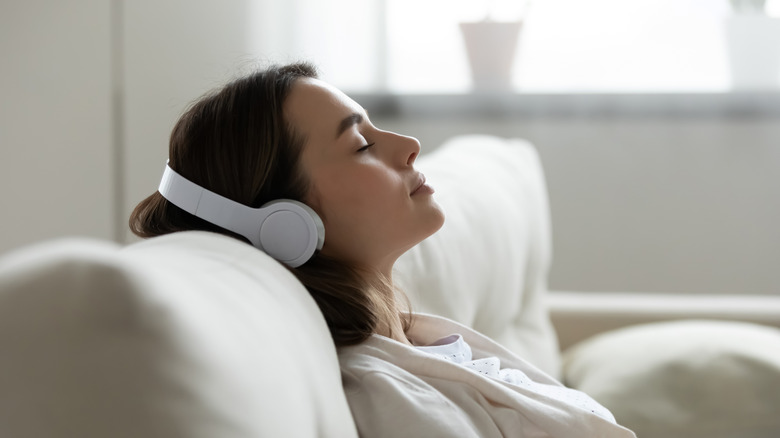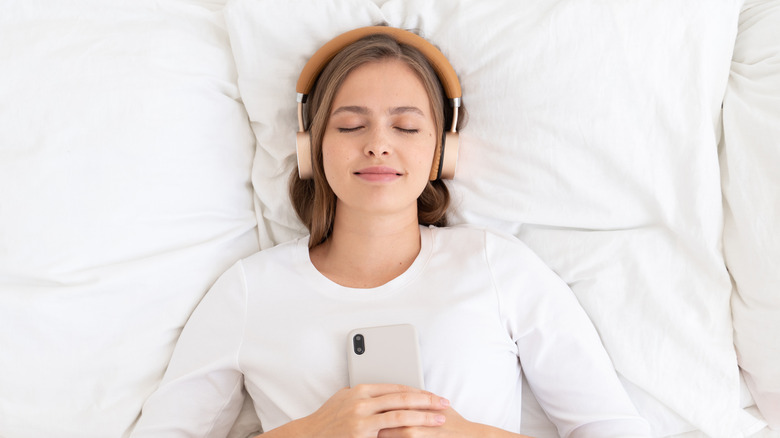White Noise Vs. Pink Noise: What's The Difference?
Two things that might not automatically compliment each other in your mind are sleep and noise. But as soon as someone says "white noise," your opinion probably changes. White noise has been suggested to help induce better, deeper sleep for years, and there are good reasons for this. According to the Sleep Foundation, sounds that disrupt your sleep like a slamming door or a telephone ringing don't generally wake you up because of their volume, but because they are inconsistent. Meaning, they come out of nowhere and surprise you. White noise creates a "blanket of noise" that helps to drown out and mute these disruptive sounds.
Some people also sleep better when their environment isn't completely silent, and white noise is helpful for these people as well. Further, white noise has been proven to help hospital patients get better rest, as there are many disruptive noises in hospitals. It may also help babies to sleep better and has even been proven to help people who have difficulty concentrating focus on a task at hand like school work.
But what about pink noise? And what's the difference?
How pink noise works
Noise and the label given to it is measured by the frequency (meaning how fast the waves vibrate per second while). Amplitude (or volume) is measured by the size of the waves. Frequency is generally measured in hertz, while amplitude (volume) is measured in decibels (via Sleep Foundation). In order to create true white noise, every single frequency that our human ears are capable of hearing is played in a random order at the exact same volume. The result is a sound that many compare to radio static.
Every sound in white noise is played at the exact same volume, which is why it has that sort of high-pitched radio static noise (via Healthline). While many people find it soothing, some find it irritating and prefer a deeper sound. Pink noise, like white noise, consists of all the frequencies we can hear, they aren't played at the same volume. Instead, it is more intense at lower frequencies, which means higher pitched sounds are softer. The result is a deeper sound like falling rain or rustling of leaves.
Many sound-creating apps and services that offer white noise also offer pink noise, so if white noise hasn't worked for you, it might be worth giving pink a try!

